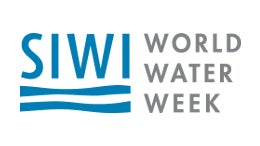 Today, 2.4 billion people still live without access to improved sanitation; about one billion people defecate in the open; and more than 640,000 people lack improved drinking water sources.
Today, 2.4 billion people still live without access to improved sanitation; about one billion people defecate in the open; and more than 640,000 people lack improved drinking water sources.
With the adoption of the Sustainable Development Goals on water and sanitation ( SDG 6), countries of the world committed themselves to change this situation by achieving universal access to safe water and sanitation while addressing issues of water quality and scarcity to balance the needs of households, agriculture, industry, energy, and the environment over the next 15 years.
A substantial increase in sector financing will be necessary to achieve SDG 6. Recent estimates by the World Bank’s Water and Sanitation Program (WSP) indicate that the present value of the additional investment in the water and sanitation sector alone needed through 2030 will exceed US$1.7 trillion. Existing funding falls far short of this amount; countries may have to increase their water and sanitation investments by up to four times in order to meet the SDGs .

At present, most water sector actors in developing countries rely on government lending and concessional financing from national, bilateral or multilateral development banks (MDBs) to mobilize financing for capital investment. These financial sources alone will not be sufficient to finance investments on the scale that is called for by the SDGs. It is therefore essential to mobilize up-front financing from commercial sources as well.
National governments and donors must use their funds in a catalytic manner, as part of broader financing strategies that mobilize funding from sector efficiency gains, tariffs, domestic taxes, and transfers to crowd in domestic commercial finance. If they are able to do so, countries will be much more likely to access the resources they need to improve and expand the infrastructure needed to deliver and sustain universal coverage of water and sanitation services and achieve SDG 6.
However, commercial finance has been limited for the water sector up to now. How can it be mobilized? In a newly published paper - Achieving Universal Access to Water and Sanitation by 2030: The Role of Blended Finance, we suggest that “blended finance” can help lift the constraints that are limiting the mobilization of commercial financing for the water sector.
What is “blended finance”?
OECD refers to blended finance as ‘the strategic use of development finance and philanthropic funds to mobilize private capital flows to emerging and frontier markets’. Blended finance in the water sector has the potential of mobilizing private sector financing for credit-worthy or close to credit-worthy investments. This would allow reallocating public funds to other areas where public subsidies are likely to be needed.
Commercial finance usually brings requirements for greater investment discipline and transparency, which in turn could support improved efficiency in the sector, an objective for most water sector reform efforts around the world. Domestic commercial finance in particular can be mobilized in local currency, which reduces the foreign exchange risk and can bring down transaction costs, particularly for smaller scale investments to improve efficiency that can generate rapid returns (such as replacing meters or fixing leaks).
Blended finance has traditionally been used as a tool to stimulate interest from the commercial financial sector, with the use of concessional finance then tapering off over time to avoid distorting markets. Given the embedded distortions in the WSS sector in developing countries, where financing is predominantly based on subsidized public funds, it will be necessary to move towards mobilizing more commercial funds over time. Blended finance can be a stepping-stone in that transition.
We also pulled together nine case studies on how blended finance has been used in facilitating access to water and sanitation in developing countries so far. These case studies include diverse experiences reflecting different levels of financial market development and targeting different sector needs -- from facilitating access to microfinance for households to invest in water and sanitation in Cambodia or Bangladesh, all the way to setting up a revolving fund for utility investments in the Philippines.
The case studies shed light on how grants, concessional lending and various forms of credit enhancement (such as guarantees or revenue intercepts) have been used to address constraints on accessing finance so that more households would have access to drinking water, an adequate toilet and a suitable place to wash their hands by 2030.
Do you know of other examples where blended finance approaches have been successful in catalyzing investment in the water and sanitation sector? What about other sectors? Let us know in the comments! Or write to us at jkolker@worldbank.org and stremolet@worldbank.org.
We are also co-convening a session on Water Finance during World Water Week 2016 in Stockholm. For more information, visit: Cracking the Water Finance Puzzle: Crowding in Private Finance



Join the Conversation